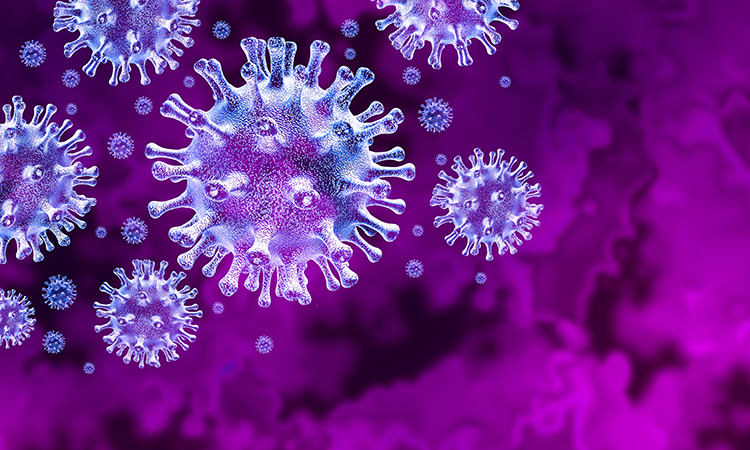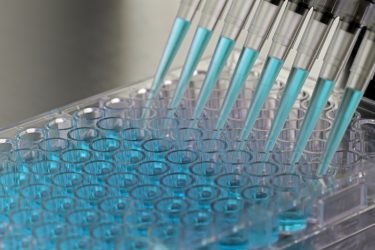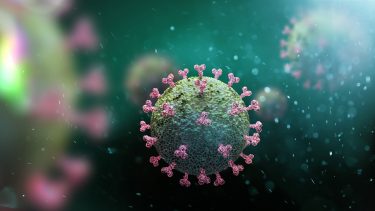Targeting SARS-CoV-2 replication with inhibitors of lipid metabolism
Posted: 30 September 2021 | Professor Christopher Basler (Georgia State University) | No comments yet
One approach towards efficient drug targeting efforts for COVID-19 is to repurpose medicines developed for other diseases. Here, Professor Christopher Basler outlines a recent study, published in Cell Reports, where scientists from the Institute for Biomedical Sciences at Georgia State University, US, in collaboration with industry partners, developed assays to test existing drugs and demonstrated that inhibitors of proteins involved in fatty acid metabolism could work as potential therapeutic options to block SARS-CoV-2 replication.


As the COVID-19 pandemic continues to inflict devastating effects worldwide, it is critically important to understand the biology of SARS-CoV-2 to identify new ways to target the virus. One approach to develop efficient clinical interventions is to repurpose medicines developed for other diseases to treat COVID-19. Such an approach could accelerate the timelines for COVID-19 treatment availability for patients across the globe.
This study aimed to identify proteins in the fatty acid metabolism pathway that are critical for SARS-CoV-2 replication”
Recently, my team at the Institute for Biomedical Sciences at Georgia State University, in collaboration with Synthego and Axion Biosystems Inc., investigated such an approach. We built on the current understanding of SARS-CoV-2 viral replication to test whether small molecules that block fatty acid metabolism could inhibit viral replication. Our findings were recently published in Cell Reports.1
Coronavirus replication and lipid metabolism
Coronaviruses rely on host cell membranes to enter cells. Once inside the cell, the virus establishes specialised structures called replication organelles, which are then used as the location for assembling new virus particles. Viral entrance into the cell, formation of replication organelles and the eventual release of new viruses require hijacking of the host cell membranes to complete the viral replication cycle.
Some proteins involved in fatty acid metabolism, which is crucial for the formation and modification of cell membranes, have previously been shown to inhibit the replication of numerous viruses.2-6 This study aimed to identify proteins in the fatty acid metabolism pathway that are critical for SARS‑CoV-2 replication.


We also investigated the roles of fatty acid synthase (FASN) and long chain Acyl-CoA synthetase, two other proteins involved in fatty acid metabolism, in viral replication. SARS-CoV-2-infected Vero E6 cells were treated with two inhibitors shown to have antiviral activity. Treatment of cells with Orlistat, a US Food and Drug Administration (FDA)-approved drug that inhibits gastric lipases and FASN and Triacsin C, an inhibitor of long chain Acyl-CoA synthetase, significantly impaired SARS-CoV-2 replication in Vero E6 cells.3,5,9,10 Assays performed to understand when inhibition occurs indicated that treatment with these compounds hinders replication after the virus enters the cell.
These findings were confirmed in a human airway cell line, Calu-3, which shows increased susceptibility to infection and has previously been established as a standard for infection studies with SARS-CoV-1, Middle East respiratory syndrome coronavirus (MERSCoV) and SARS-CoV-2.11-13 Treatment of infected Calu-3 cells with both VPS34 and fatty acid metabolism inhibitors provided further evidence that specific proteins involved in fatty acid metabolism are important for efficient SARS‑CoV-2 replication and may be potential therapeutic targets.
Validating the role of FASN in SARS-CoV-2 replication


Consistent with the previous results in the Vero E6 and Calu-3 cell lines, SARS-CoV-2 replication was substantially lower in the FASN knockout cells compared with wild type cells. Viral protein production also diminished in the FASN knockout cell line. Furthermore, supplementing cells with fatty acids rescued the impaired viral replication effect. These data suggest that fatty acid metabolism is necessary for efficient, sustained replication during SARS-CoV-2 infection.
Potential therapeutic targets
Our data show proteins involved in lipid metabolism could serve as therapeutic targets for SARS-CoV-2 infection. In addition, these data provide key insights into SARS-CoV-2-host interaction. Although this study provided a greater understanding of how SARS-CoV-2 uses the host’s cell membranes to propagate, there is much more to learn about how this virus interacts with our cells and spreads throughout the body. Further studies could help uncover how uninhibited VPS34 promotes SARS‑CoV-2 infection and determine the mechanism of action for inhibitors of VPS34 and fatty acid metabolism in impairing viral replication.
About the author
Dr Christopher F Basler is a Professor and Director of the Center for Microbial Pathogenesis at the Institute for Biomedical Sciences at Georgia State University and a Georgia Research Alliance Eminent Scholar in Microbial Pathogenesis. His major research interests are immune evasion and replication mechanisms of filoviruses and other emerging RNA viruses. Notable achievements include the identification and characterisation of Ebola virus and Marburg virus interferon antagonist proteins. He was elected Fellow of the American Academy of Microbiology in 2014. He became professor of microbiology at Icahn School of Medicine at Mount Sinai in New York City in 2013. Christopher obtained his PhD from Albert Einstein College of Medicine.
References
- Williams C, Jureka A, Silvas J, et al. Inhibitors of VPS34 and fatty-acid metabolism suppress SARS-CoV-2 replication. Cell Reports. 2021;36(5):109479.
- Chen, B., Sun, Y., Niu, J., et al. (2018). Protein Lipidation in Cell Signaling and Diseases: Function, Regulation, and Therapeutic Opportunities. Cell Chem. Biol. 25, 817–831.
- Ammer, E., Nietzsche, S., Rien, C., et al. (2015). The anti-obesity drug orlistat reveals anti-viral activity. Microbiol. Immunol. (Berl.) 204, 635–645.
- Cheung, W., Gill, M., Esposito, A., et al. (2010). Rotaviruses associate with cellular lipid droplet components to replicate in viroplasms, and compounds disrupting or blocking lipid droplets inhibit viroplasm formation and viral replication. Virol. 84, 6782–6798.
- Kim, Y., George, D., Prior, A.M., et al. (2012). Novel triacsin C analogs as potential antivirals against rotavirus infections. J. Med. Chem. 50, 311–318.
- Liefhebber, J.M., Hague, C.V., Zhang, Q., et al. (2014). Modulation of triglyceride and cholesterol ester synthesis impairs assembly of infectious hepatitis C virus. Biol. Chem. 289, 21276–21288.
- Feng, Z., Xu, K., Kovalev, N., and Nagy, P.D. (2019). Recruitment of Vps34 PI3K and enrichment of PI3P phosphoinositide in the viral replication compartment is crucial for replication of a positive-strand RNA virus. PLoS Pathog. 15, e1007530.
- Su, W.C., Chao, T.C., Huang, Y.L., et al. (2011). Rab5 and class III phosphoinositide 3-kinase Vps34 are involved in hepatitis C virus NS4B-induced autophagy. Virol. 85, 10561–10571.
- Hitakarun, A., Khongwichit, S., Wikan, N., et al. (2020). Evaluation of the antiviral activity of orlistat (tetrahydrolipstatin) against dengue virus, Japanese encephalitis virus, Zika virus and chikungunya virus. Rep. 10, 1499.
- Nasheri, N., Joyce, M., Rouleau, Y., et al. (2013). Modulation of fatty acid synthase enzyme activity and expression during hepatitis C virus replication. Biol. 20, 570–582.
- Chu, H., Chan, J.F., Yuen, T.T., et al. (2020). Comparative tropism, replication kinetics, and cell damage profiling of SARS-CoV-2 and SARS-CoV with implications for clinical manifestations, transmissibility, and laboratory studies of COVID-19: an observational study. Lancet Microbe 1, e14–e23.
- Sheahan, T.P., Sims, A.C., Leist, S.R., et al. (2020). Comparative therapeutic efficacy of remdesivir and combination lopinavir, ritonavir, and interferon beta against MERS-CoV. Commun. 11, 222.
- Tseng, C.T., Tseng, J., Perrone, L., et al. (2005). Apical entry and release of severe acute respiratory syndrome-associated coronavirus in polarized Calu-3 lung epithelial cells. Virol. 79, 9470–9479.
Related topics
Assays, Drug Development, Drug repurposing, Molecular Targets, Screening
Related conditions
Covid-19
Related organisations
Axion Biosystems, Fluidic Analytics, Metabolon, Synthego, US Food and Drug Administration (FDA)


